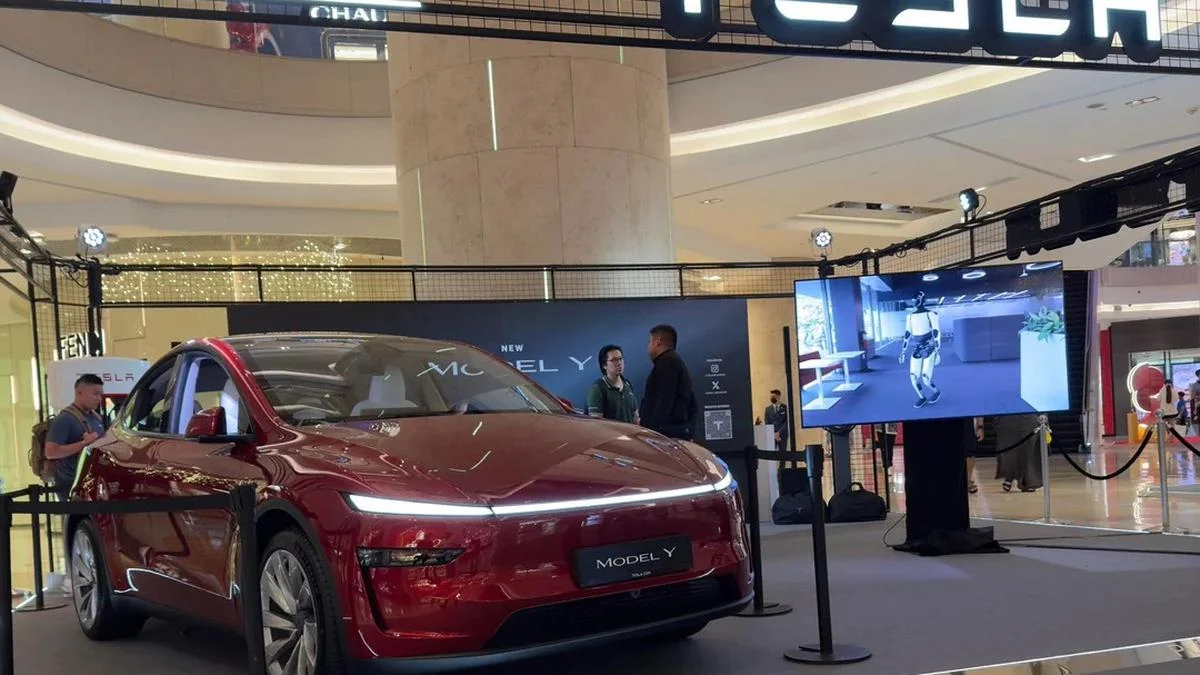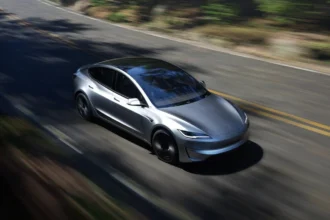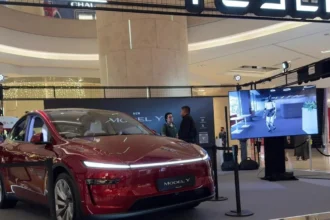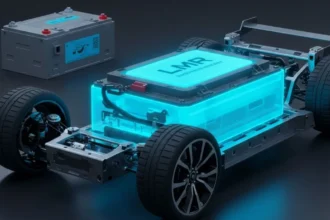Something’s off in the once-glitzy world of Tesla. The aura, the sizzle, the cultish magnetism, gone flat. This isn’t just the slow turn of a market correction or the hangover from a decade of disruption. Stock prices have tripped and tumbled nearly 40% from their 2021 high as of Q2 2025, according to Bloomberg.
Midwest Tesla Dealership Overrun by Unsold Vehicles as Musk’s Focus Shifts
While Elon Musk focuses on ventures like Mars and artificial intelligence, unsold Tesla vehicles are accumulating on dealership lots, like the one in the Midwest that recently caught a Redditor’s eye.
“I saw the Tesla dealership today as I was running errands in the Midwest, and observed some changes. The lot is packed with vehicles for sale, no empty spots. I take it they’re struggling to move inventory. Zero non-Tesla vehicles on the lot. Meaning, no one is currently inside test driving. Most lot vehicles are a mix of old Model Ys and new Model Ys (from the headlight array). I don’t know how they’re going to clear the old model inventory out. A single demo Cybertruck was tucked away around the side of the building. Lol, they’re not even trying to move those dumpsters where I live. Side note: They look like they are flipping garish in person. I’m shocked they sold any of them at all. Last time I did a test drive at the location, which was about 4 years ago, and it was completely the opposite. Maybe half as many vehicles on the lot. Plenty of foot traffic and non-Tesla vehicles, people test-driving or looking at the vehicles. It’s in one of those stretches with a bunch of dealerships, so lots of people are scheduling test rides. We’re in the Midwest, so broadly an EV-friendly area, plenty of used Teslas on the road, but they are dead in the water right now if their dealerships are any indicator. It’s interesting to see the brand self-destruct unfold IRL! I’m sure I’ll read about it in a business case study one day, but you can actually see it at their locations (when they’re not getting vigorous protests, which ours gets pretty regularly).” – r/RealTesla, u/IcyHowl4540
One might dismiss this as anecdotal grumbling if it weren’t for the chorus of similar voices from across Tesla’s customer base. On the same thread, another user remarked,
“The new Model Y is available same day in all zip codes. Never is a first-year model as unpopular.”
That’s simply not the case. The logistical hurdles alone would be immense… borderline unworkable.
Still, comments like this speak to a broader undercurrent in the community, a growing sense of disillusionment and frustration with the current trajectory.
Tesla Q1 2025 Deliveries Plunge 13% Amid Aggressive Discounts
- In the first quarter of 2025, Tesla reported a 13% decrease in global vehicle deliveries compared to the same period in the previous year, marking its weakest quarter since early 2022. This decline occurred despite the company offering substantial discounts and incentives to boost sales.
- Tesla faces increasing competition from both established automakers and emerging EV manufacturers. For instance, BYD surpassed Tesla in electric vehicle sales in Q1 2025, delivering over 1 million EVs compared to Tesla’s 336,681. BYD’s diverse and affordable EV lineup has appealed to a broader customer base, challenging Tesla’s market share.
- Public perception of Tesla’s leadership, particularly CEO Elon Musk’s political affiliations and statements, has influenced consumer sentiment. In California, Tesla’s sales dropped by 21% in Q1 2025, while other EV brands saw a collective increase. The company’s market share in the state fell from nearly 50% to under 40% within a year, indicating a shift in consumer preferences possibly linked to brand image concerns.
Then there’s the Cybertruck, once billed as the ultimate disruptor. Its polarizing design, a retro-futuristic wedge that looks like something abandoned on the set of Total Recall, was meant to shock and awe. And it has, but not in the way Tesla intended.
According to the Reddit post, only a single demo unit was visible, tucked around the side of the building like a shameful secret. It’s become less of a revolutionary workhorse and more of a four-wheeled punchline.
Cybertruck Critics Cite Fit & Finish Flaws in Early Reviews
Reviews have been lukewarm at best, with complaints about fit and finish, software instability, and real-world usability. It turns out that building a stainless steel truck that looks like a prop from RoboCop may not be the most efficient way to conquer the pickup market.
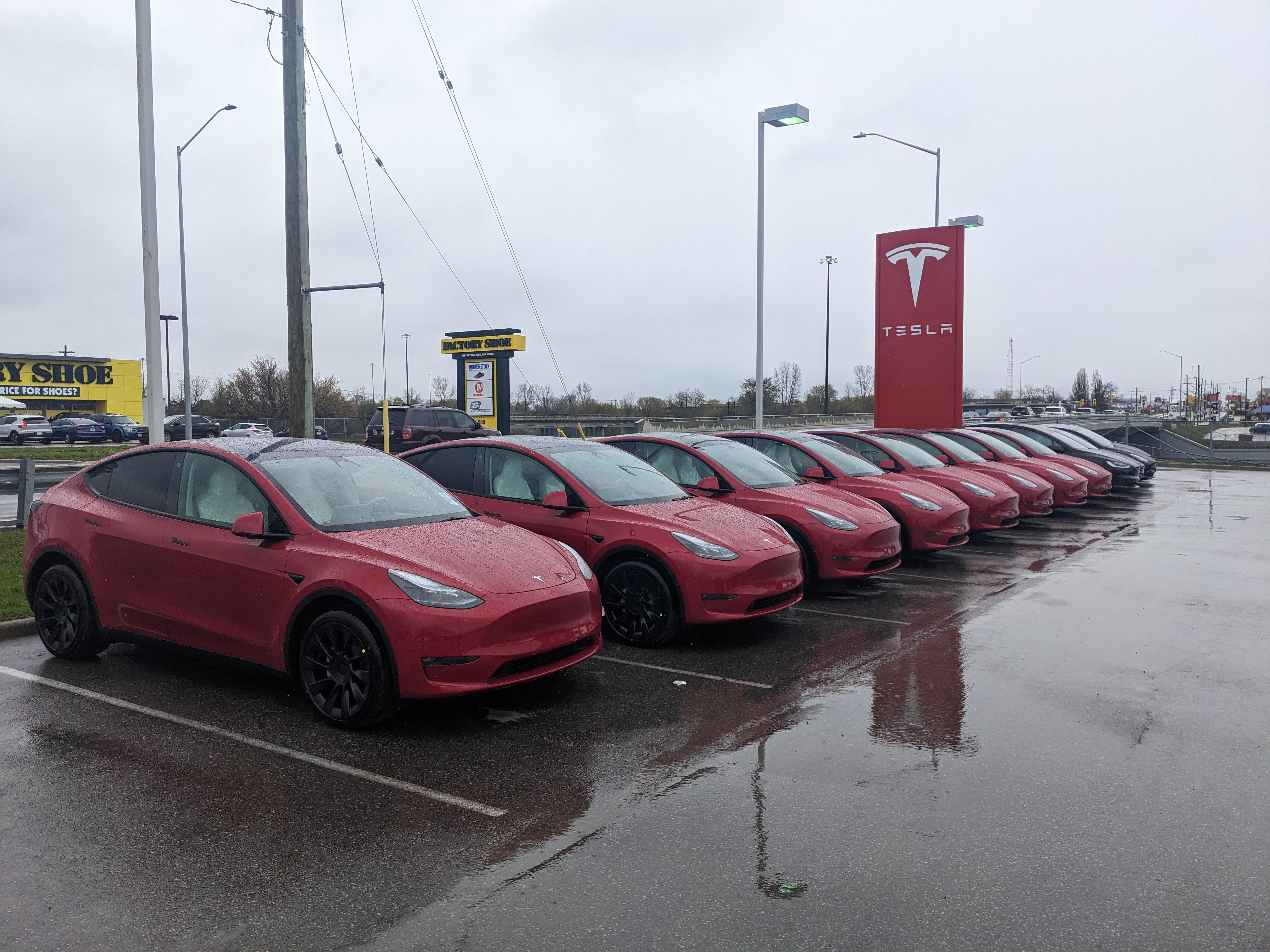
Meanwhile, Tesla’s service infrastructure is buckling. One user, u/IronSeagull, described a service appointment where, after being told he had several days to pick up his car, he was called twice and threatened with storage fees because the lot was too full. Oh, and they also lost his key. This isn’t boutique tech-forward customer service; it’s chaos with a smiley-face emoji in the app. If your high-end EV ends up lost in the backlot like luggage at LAX, the brand’s vaunted user experience doesn’t amount to much more than an expensive inconvenience.
Elon Musk Distractions and FSD Delays Erode Tesla’s Brand Trust
However, perhaps the most corrosive issue Tesla faces isn’t logistical; it’s reputational. Musk’s ever-widening portfolio of distractions, from Twitter tantrums to geopolitical showboating, has eroded the trust of even his diehard fans. Full Self-Driving, once pitched as the crown jewel of Tesla’s future, remains in beta limbo. As Jalopnik put it,
“The name is a misnomer; FSD requires constant supervision and doesn’t render vehicles autonomous.”
Even Musk himself admitted,
“I’m the boy who cried FSD.”
Confidence in the company’s direction has given way to consumer skepticism, and, worse, apathy.
Compounding the issue are growing quality concerns. As Reuters recently reported, multiple customers have experienced catastrophic mechanical failures in brand-new Teslas. One Model Y reportedly had its front wheel detach while on Autopilot. Tesla, when confronted, blamed the incidents on “prior damage”. For a company that sells itself on engineering brilliance, repeated quality lapses are less a bug and more a warning light flashing red on the dashboard.
How Tesla’s Direct-to-Consumer Model Differs from Traditional Dealerships
- Unlike conventional automakers that rely on franchised dealerships, Tesla sells its vehicles directly to consumers through company-owned stores and online platforms. This model eliminates intermediaries, allowing Tesla to maintain consistent pricing and a uniform customer experience across all locations.
- Tesla’s retail locations, often situated in high-traffic urban areas or shopping malls, function more as showrooms than traditional dealerships. These spaces are designed to educate customers about Tesla’s products rather than facilitate on-site purchases, which are typically completed online. This contrasts with traditional dealerships that maintain large inventories and focus on in-person sales negotiations.
- Tesla’s sales process is designed to be straightforward and customer-friendly, often praised for its efficiency compared to the more complex procedures at traditional dealerships. The absence of haggling and a focus on transparency appeal to consumers seeking a modern car-buying experience.
This is the part of the story where the brand that changed the rules of the game must decide whether to evolve or dissolve. There’s still immense value in Tesla’s charging network, battery innovation, and brand equity.
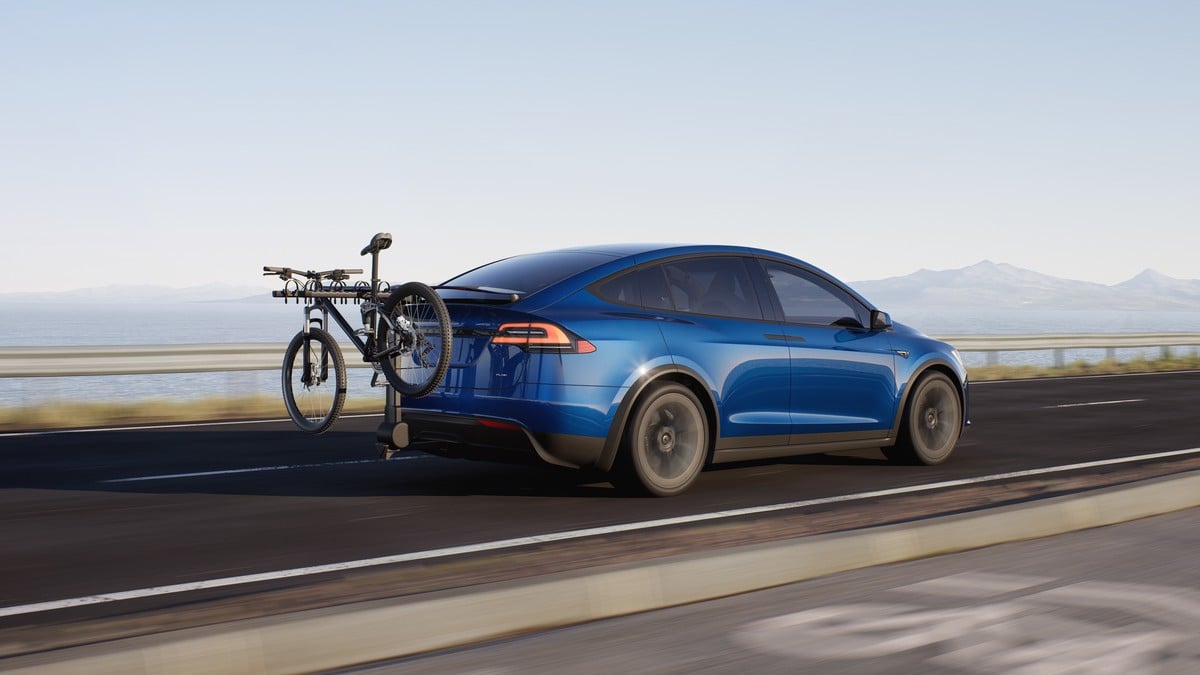
But that edge is dulling fast as the competition surges forward with vehicles that look less like science fiction and more like solid, well-built transportation.
Tesla’s Next Chapter at Risk as Unsold EVs Gather Dust in the Heartland
And as we watch those once-sought-after EVs sit motionless on Midwestern asphalt, it’s becoming increasingly clear that Tesla’s next chapter won’t be written in code or stainless steel. It will be forged, or fractured, by how well it can reconnect with the public.

